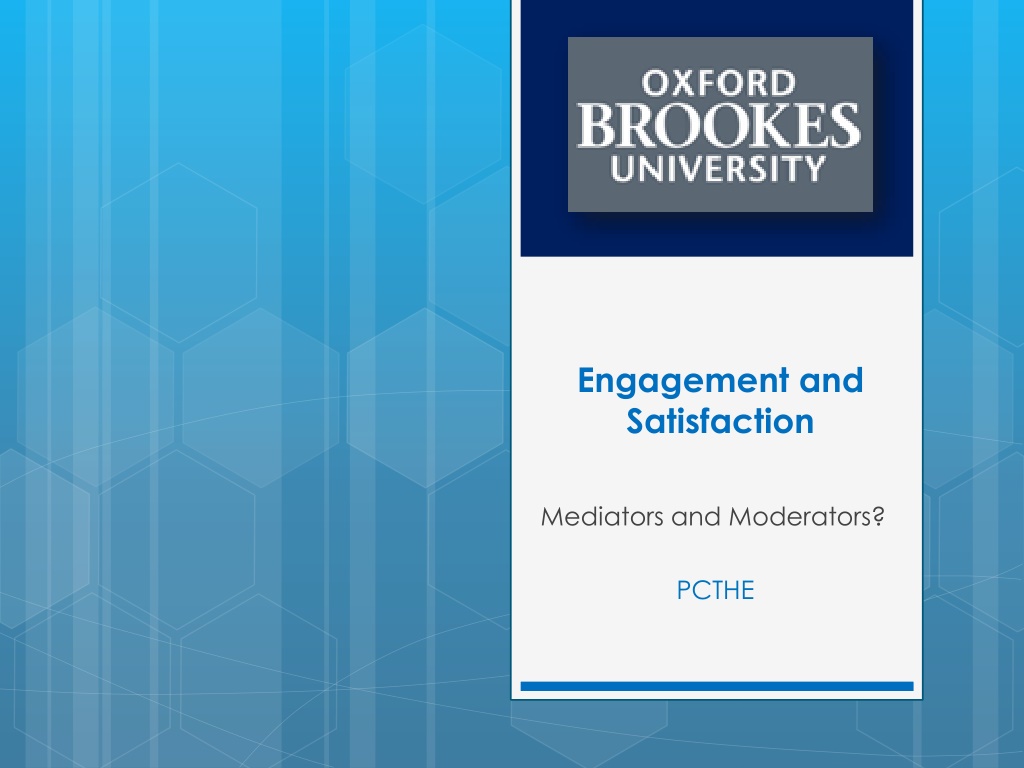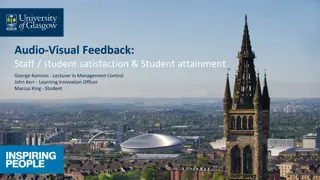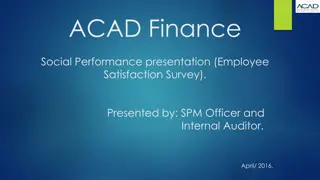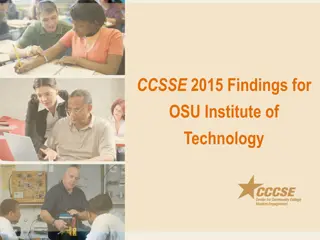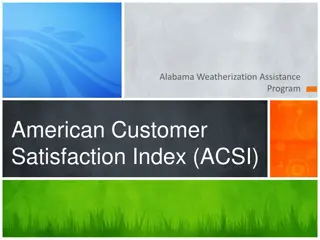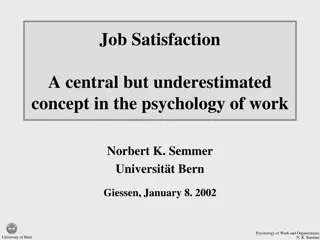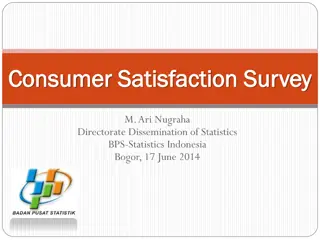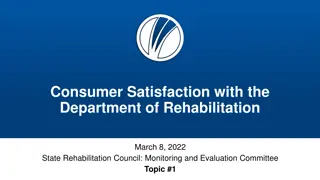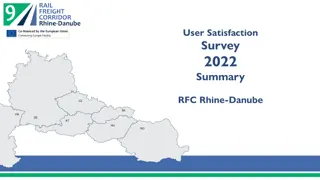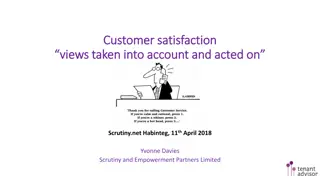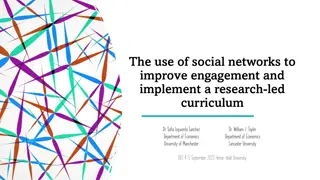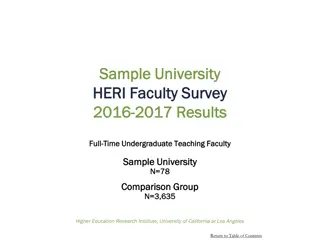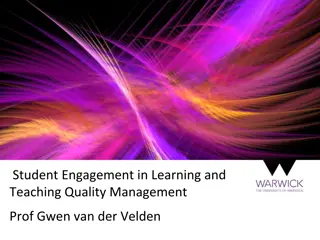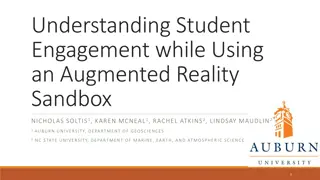Student Engagement and Satisfaction in Education
Enhancing student experience is a key strategy for learning in the US and Canada. This article explores the concepts of student engagement and satisfaction, highlighting their importance in predicting learning outcomes and personal development. It delves into what student engagement entails, various aspects of engagement, and how it relates to learning in educational settings.
Download Presentation

Please find below an Image/Link to download the presentation.
The content on the website is provided AS IS for your information and personal use only. It may not be sold, licensed, or shared on other websites without obtaining consent from the author.If you encounter any issues during the download, it is possible that the publisher has removed the file from their server.
You are allowed to download the files provided on this website for personal or commercial use, subject to the condition that they are used lawfully. All files are the property of their respective owners.
The content on the website is provided AS IS for your information and personal use only. It may not be sold, licensed, or shared on other websites without obtaining consent from the author.
E N D
Presentation Transcript
Engagement and Satisfaction Mediators and Moderators? PCTHE
Introduction US and Canada Enhancing student experience Key strategy for learning
Introduction Engagement vs Satisfaction
Introduction Engagement vs Satisfaction US and Canada ?
What is Student Engagement? Participation in educationally effective practices, both inside and outside the classroom, which leads to a range of measurable outcomes (Kuh et al., 2007) The quality of effort students themselves devote to educationally purposeful activities that contribute directly to desired outcomes (Hu & Kuh, 2001) The process whereby institutions and sector bodies make deliberate attempts to involve and empower students in the process of shaping the learning experience (HEFCE, 2008) The time and effort students devote to activities that are empirically linked to desired outcomes of college and what institutions do to induce students to participate in these activities (Kuh, 2009).
What is Student Engagement? According to Coates (2007)engagement comprises the following: Six engagement scales Five facets Active and collaborative learning Active learning Academic challenge Participation in challenging academic activities Student and staff interactions Formative communication with academic staff Enriching educational experiences Involvement in enriching educational experiences Supportive learning environment Feeling legitimated and supported by university learning communities Work-integrated learning
Engagement and Learning Student engagement is generally considered to be among the better predictors of learning and personal development. (Carini, Kuy, & Klein, 2007)
Engagement and Learning Because, presumption (or reality) that: if students study or practice a subject they tend to learn about it if students practice and get feedback on their writing, analyzing, or problem solving adept they should become (Kuh, 2003)
Issues enhancing Student Engagement o Interaction o Exploration o Relevancy o Multimedia o Instruction o Authentic assessment Willms, et al., 2009; Windam, 2005; Trowler 2010.
Issues affecting Student Engagement o Academic difficulties o Adjustment difficulties (social maturity) o Unclear, narrow, changing goals o Weak and external commitment to HE o Financial inadequacies o Lack of `fit (social or academic) o Isolation Tinto (1993)
Student Satisfaction Higher education can be seen as a pure service (Oldfield & Baron, 2000, p. 86) Perceived quality= comparison of customer service expectations with their perceptions of actual performance (Zeithaml et al.,1990)
What is Student Satisfaction? Refers to the student s perception or attitude towards the learning activities. https://encrypted-tbn3.gstatic.com/images?q=tbn:ANd9GcRxZbFX8EMJNTfjQQAixQvKKVpxFhYLjkvSwpsvf7OEfJ2TdQErvw http://3.bp.blogspot.com/-srnIO3WpabI/Tu5ajOGYe2I/AAAAAAAAAE4/l8_JNZ3MuBg/s1600/th_smiley-face.jpg active learner passive learner The degree of student satisfaction is the margin between level of participation and actual results (Tough, 1982). The favourability of a student s subjective evaluation of the various outcomes and experiences is associated with education. Student satisfaction is being shaped continually by repeated experiences in campus life (Elliott & Shin, 2002).
Satisfaction and Learning Strong student satisfaction implies that appropriately challenging instructional methods are serving to trigger students thinking and learning. (Lo, 2010)
Issues enhancing Student Satisfaction Gruber, FuB & Voss (2004)
Issues affecting student satisfaction Right course Availability of computers Library facilities Teaching reputation Availability of quiet areas Availability of areas for self-study Quality of public transport in the town/city Town/city friendly attitude towards students Class size Optional modules Quality of service encounters. Students interaction with all of the university s service Quality of the lecturer Classroom facilities Lecturers feedback to students University Facilities University services University Programme Lecturers/Teaching External factors Banwet & Datta, 2003; Galloway, 1998; Carlzon, 1989; Coles, 2002; Price et al. 2013; Hill et al., 2003
Engagement vs Satisfaction Can Engagement and Satisfaction be measured? NSSE NSS Chckering & Gamson 1987; Ramsden, 1991; Kuh, 2009; Harvey, 2003; Sabri, 2011.
Engaging vs Satisfying Engagement Satisfaction US and Canada How often have you Come to class without completing readings or assignments?
Engaging vs Satisfying Engagement Satisfaction US and Canada Do you agree that I have been able to access general IT resources when I needed to
Engaging vs Satisfying Engagement Satisfaction US and Canada Do you agree that I have received sufficient advice and support with my studies
Engaging vs Satisfying Engagement Satisfaction US and CanadaHow often have you Used technology to collaborate with others or engage with online communities e.g. wikis, online forums, discussion boards, social media
Activity Discussion Discuss implications of the different focus of evaluation of Universities on your teaching practices: Engagement Satisfaction Module delivery Group 1 Group 3 Group 2 Group 4 Assessment frameworks
Gibbs Dimensions of Quality Class size Class contact hours Independent study hours quality of teaching Effects of research env t Intellectual challenge student engagement Formative assessment feedback Reputation Peer quality ratings quality enhancement processes Funding Staff/Student ratios Quality of Teaching Staff Quality of Students Presage Process Student performance Degree classifications Employability Graduate destinations Product Gibbs, 2010
Gibbs Dimensions of Quality Process Presage Product Pedagogical practices that engender student engagement Educational gain Gibbs, 2010
Take home message Take home message Currently there are two different approaches for measuring student experience: Engagement Satisfaction Neither of which are satisfactory! These measures will have implications on our daily practice The debate is open! The Brookes Student Engagement Survey is ready to go from March 17th to April 4th
